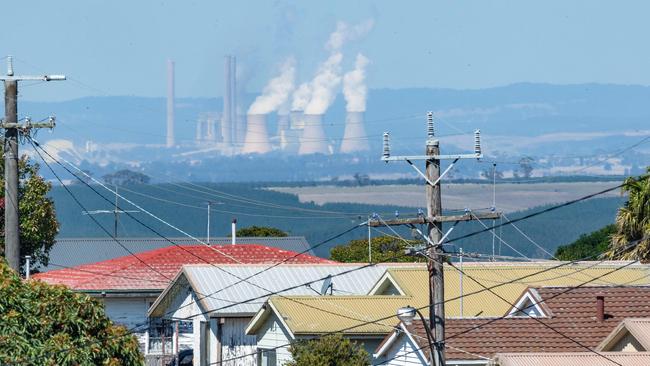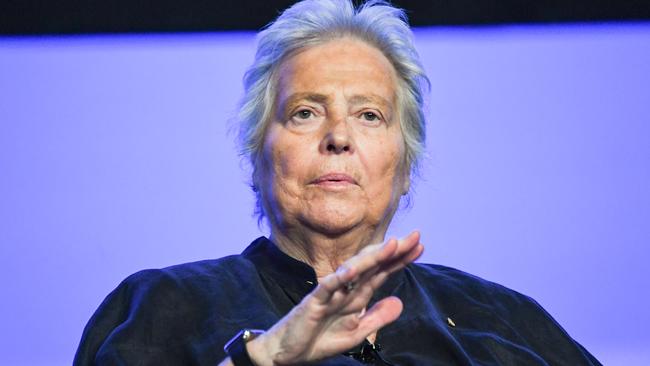Energy Security Board warns more coal power stations face closure
The Energy Security Board has warned that Australia’s remaining coal fleet could be forced to close earlier than expected.

Australia’s remaining coal fleet could be forced to close earlier than expected as low wholesale prices and cheap renewables rout generators’ profits, the Energy Security Board has warned, following EnergyAustralia’s decision to shut Victoria’s Yallourn coal plant four years early.
Coal generators including Trevor St Baker’s Vales Point in NSW, Queensland’s largest power station Gladstone and Alinta Energy’s Loy Yang B in Victoria are all viewed as contenders for early closure by analysts.
ESB chair Kerry Schott said marginal coal plants faced a decision on whether to pull the pin early.
“I wasn’t surprised that a coal plant is closing down before its technical life finishes,” Ms Schott told The Australian.
“What will happen is those coal plants which are more flexible in their operations will hang around a bit longer and those that are less flexible will go well before then. That’s what we are observing.”
Concerns are mounting that fresh uncertainty over the lifespan of coal plants will further embolden both federal and state governments to adopt an interventionist approach and either build new capacity themselves or underwrite generation to stimulate private investment.
The ESB, formed by the nation’s energy ministers, is finalising work looking at ways to encourage private investors to “step up” with new supplies rather than wait for governments to act.
“The ESB will have a paper out at the end of March to encourage the market to step up, which is what minister Taylor has been banging the drum about,” Ms Schott said.
“At the end of the day governments will undoubtedly step in to encourage whatever gap there is to be filled. I don’t doubt if it doesn’t get filled there will be some action from government because people are not going to put up with us not having power.”
Energy Minister Angus Taylor has kept the door open to building a new energy generator if the private sector does not fill the void, after making moves in NSW to step in with a giant gas plant due to the closure of AGL Energy’s Liddell plant in the 2022-23 summer.
Both the NSW and Victorian governments are also pressing ahead with their own investment plans to ensure the lights stay on as a transition to renewables accelerates.
Coal, which provides 70 per cent of electricity, will contribute less than a third of supply by 2040 and Ms Schott estimates renewables could contribute 60 per cent of the national electricity market by the end of this decade.
Consultancy GlobalRoam said the Australian Energy Market Operator should run a stress test to consider how Victoria‘s power grid would cope once EnergyAustralia’s Yallourn coal plant exits in 2028.

AEMO’s most recent electricity outlook indicated no supply shortfall out to 2028-29 but that should be revisited given the loss of the 1480MW Yallourn station, which supplies 22 per cent of Victoria’s electricity and 8 per cent of the national electricity market.
Blackouts in energy-rich Texas served as a warning for power grid operators.
“With memories of the Texas dramas very present, and the ‘lessons learnt’ still being discovered, it would seem essential that the AEMO includes a stress test in its next version of the electricity statement of opportunities that models what the situation would be in summer 2028-29 if it were to be a repeat of summer of 2019-20,” said Paul McArdle at GlobalRoam, referring to record temperatures in early 2020.
AEMO said it would model changes in its next electricity statement of opportunities in August, including both the early retirement of Yallourn and the planned addition of a big 350MW battery by EnergyAustralia in 2026.
Goldman Sachs said a rapid influx of renewables and adverse policy settings could lead to more coal plants closing earlier.
The “risk of accelerating coal generation closures is increasing, as the market makes room for the rapid addition of renewable generation. We expect withdrawal of Yallourn, Liddell and potentially other plants to drive upside to the current wholesale electricity price outlook,” Goldman analyst Baden Moore said.
Wholesale prices of $29 per megawatt hour forecast for 2029 are likely to increase by $6/MWh through 2032 due to Yallourn’s early exit, consultancy ITK Services forecasts, with a surge in renewable supply heaping pressure on coal and gas generation.
“It is basic economics that the massive amount of new supply without a demand increase forces the most expensive supply (coal and gas) out of the market,” ITK principal David Leitch said.
A return to a more volatile national electricity market was likely given growing uncertainties over coal exits and risks to the investment pipeline, consultancy Wood Mackenzie said.
“There are risks of early closures but also of delayed closure if necessary dispatchable capacity doesn’t come online,” WoodMac senior analyst Rishab Shrestha said.
“The pipeline for battery storage projects remains very strong but there are many risks to the business case such as interconnections and grid infrastructure investment timeline, capital costs, storage revenue streams among other things.”






To join the conversation, please log in. Don't have an account? Register
Join the conversation, you are commenting as Logout